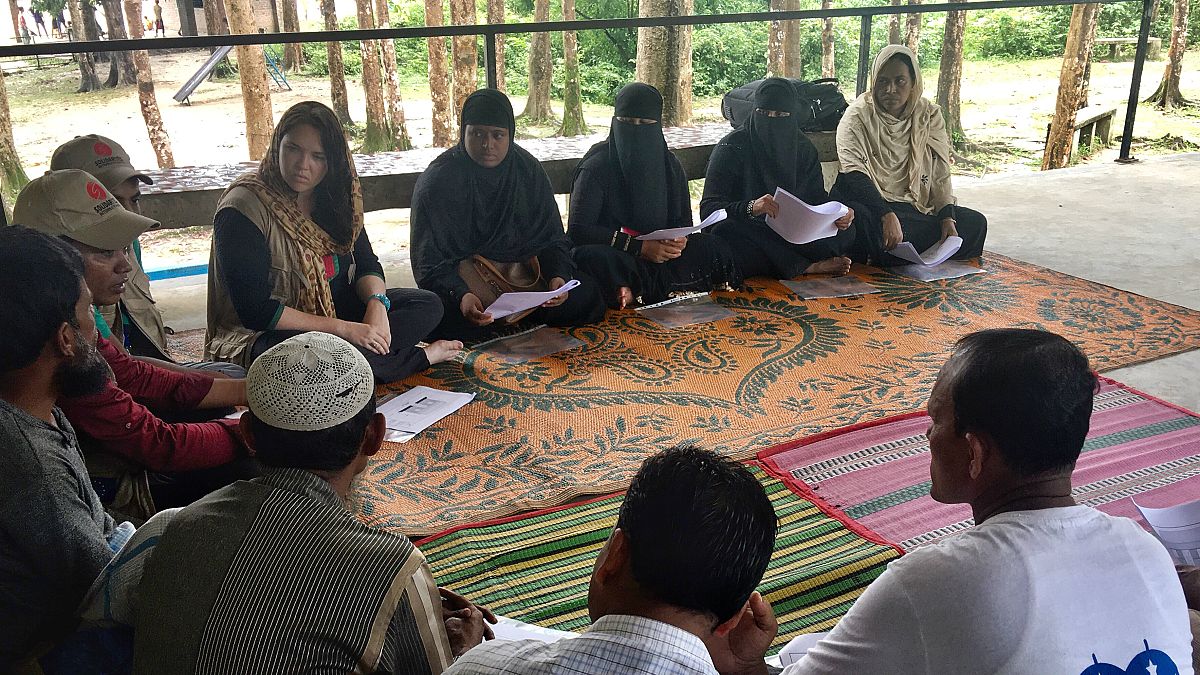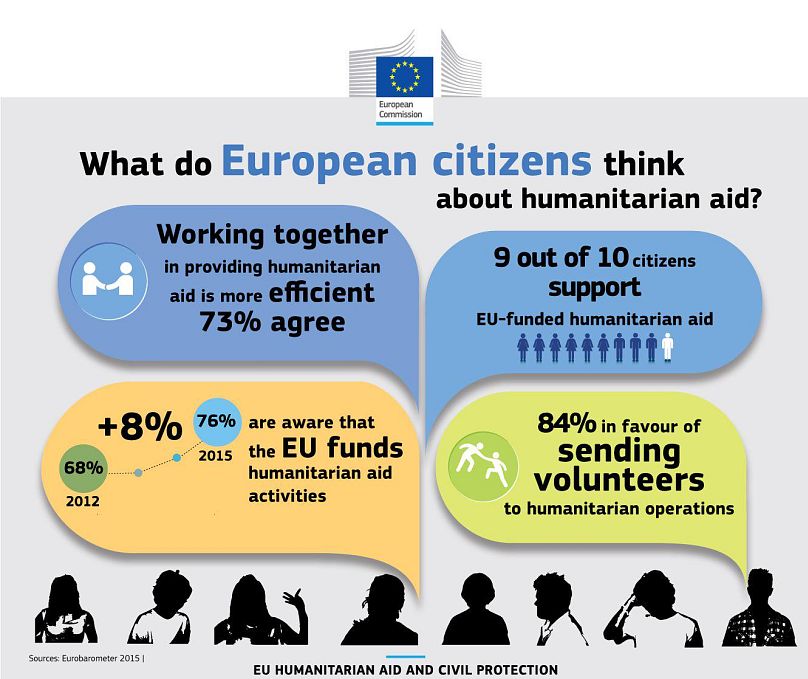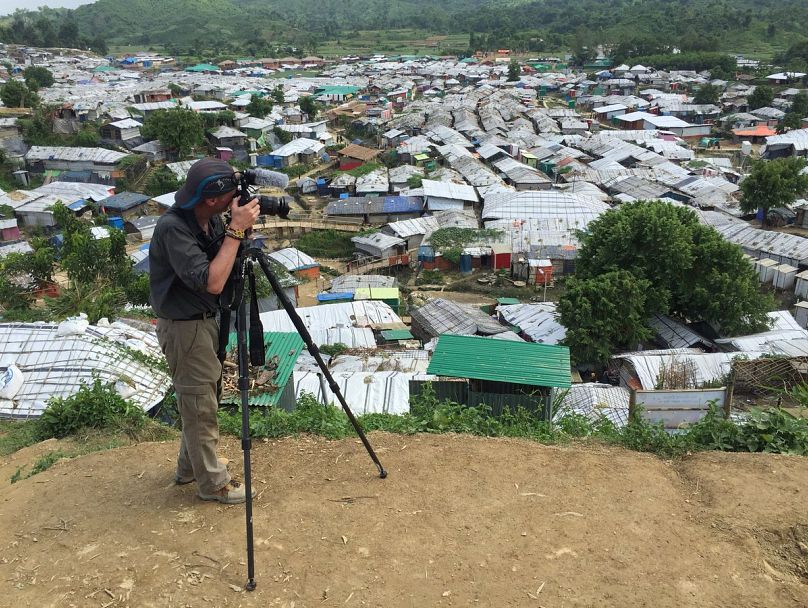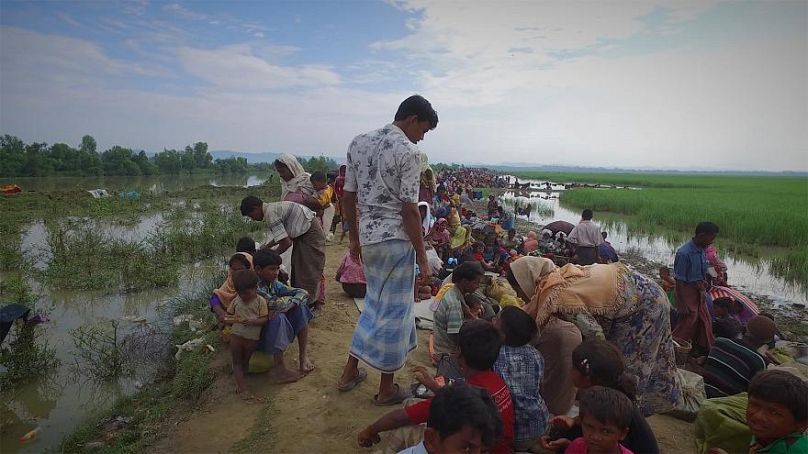What happens when your community becomes outnumbered by a sudden wave of refugees? On the border with Myanmar, Bangladeshi communities are discovering that. with aid, co-operation, not exclusion, is the way forward.
Around one million Rohingyas live today in Southern Bangladesh.
Over 720,000 refugees have fled into Bangladesh since August last year following a military crackdown in Myanmar that the UN said could amount to a genocide.
Independent researchers have put at 24,000 the estimated number of Rohingyas murdered in Myanmar since August 2017.
Domdomia is a village of around 750 households in Cox Bazaar District. Of these just over 200 are Bangladeshi families, while the rest are Rohingyas. Domdomia has become a mixture of residents' houses and refugee shelters. Around it, Jadimura camp has grown to over 13,000 people. These two communities have learnt that "cooperation" is the key for mutual life improvement.
"We saw there was an increased need for water and we asked for help to bring a water tank here. Now it has been working for 6 months and around 200 families among the host community and Rohingyas have benefited from it," says a relative of one such local landowner, Badsa Mia.
Badsa's family has agreed to a water distribution point being set up on their land. The NGO Solidarités International, financed by the EU Humanitarian Aid Department, provided the water tank here and coordinated its use. It was a big improvement for refugees like Moriam Khatum.
"When we arrived we had to climb up the mountain to get water. We risked being attacked by wild elephants and snakes. It took one and a half hours to go there and come back. I went two or three times each day. Now it's easier, the water point is just down the road," she says.
Moriam's shelter is located on a private piece of land where another 70 Rohingya families have found refuge. The owner, Hamida Begum, used to farm this plot. Today she receives a modest rent in exchange.
"When they came here they had no shelter, I felt sorry for them. This is why I decided to host them on my land. I did it because it was the moral thing to do," she says.
"The collaboration between the Rohingya and local people here at Domdomia proved to be useful not only in water management, but it is also improving everyday life in the camp," reports euronews' Monica Pinna.
The French NGO set up "Para development committees", "Para" meaning "village", where elected host community members and Rohingyas discuss their communities' needs. The committee told us each meeting has tackled and solved concrete problems.
"The Para Development Committee is one of our social cohesion strategies, it’s about bringing the community together to be able to work together to resolve issues before they become large, to be able to identify humanitarian needs so that we can discuss this with NGOs as well," says Solidarités International's Programme Manager Tara Pollock.
The project "cash for work" helps to put decisions into practice. It is a way of generating short-term income opportunities for refugees and the host community. In one part of Jadimura camp they are working together on drainage, pathways and bamboo bridges. Each worker receives a minimum of five dollars a day.
"Based on a vulnerability assessment we are looking at the 150 most vulnerable households in this community. On a rotating basis they will complete work to improve their living conditions and improve their community," says Pollock.
For the EU, working on social cohesion is crucial. Living together is the only option as the Rohingyas have nowhere else to go.
But if the Rohingyas' needs are still so urgent and still not met, why is it so important to focus also on local communities?
"The situation we are dealing with here is that we had a very large influx of population of refugees arriving here, to the extent that now in some areas we have twice as many refugees as locals. Inevitably this arrival of a large population has created a lot of stress on local resources, water, firewood and, more generally, on the local economy.
"So as the situation becomes protracted it is much more important to make sure that humanitarian programs address both communities so as not to create division and even possibly resentment", says the EU Humanitarian Aid's Pierre Prakash.
Though they have basic humanitarian assistance, the Rohingyas are still lacking essential rights, while the UN has stated top Myanmar commanders must face genocide charges.



